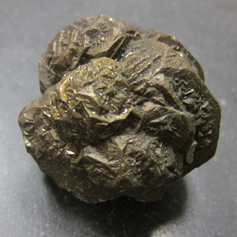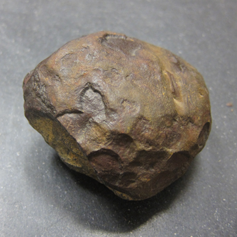The images and information given below are a guide to the general appearance of meteorites. It addresses the most common questions that the Monnig Meteorite Collection and Gallery are asked about identifying meteorites.


Not every rock that looks like a meteorite is a meteorite and not every meteorite looks like a meteorite. We never identify meteorites by photograph because it is not always possible to determine if something is a meteorite just from its appearance.
Weight
Most, but not all meteorites, feel heavy for their size.
Burned or molten appearance
Meteorites don’t burn as they come through the atmosphere, nor do they melt completely. The very outside of the meteorite melts and forms a crust on the outside (see fusion crust).
Fusion Crust
The crust on the outside of a meteorite is called a fusion crust. This crust is thin and it is usually dark (black or brown-ish) and glassy in appearance. There are many terrestrial processes that can cause rocks to have a coating or rind on them and these can often look a lot like a fusion crust.
Regmaglypts
Regmaglypts are marks that can be found on the outside of meteorites, particularly iron meteorites. They look like thumb prints. Not all meteorites have these but they are common.
Inside vs. outside
The outside of a meteorite is usually darker than the inside. This is because of the fusion crust that forms on meteorites. While the fusion crust can be weathered away, there is usually fusion crust present on at least one face of a meteorite.
Vesicles/Holes
Very few meteorites have holes or vesicles in them and those that do only have a few, small holes.
Shape
Meteorites do not tend to be spherical or circular. There are many processes on the Earth’s surface that form spherical rocks but these processes do not occur where most meteorites originate. Meteorites are also, in general, not rectangular or square and they do not have flat sides. As a meteorite falls through the atmosphere, the edges and corners are the first things that melt. This process is similar to leaving an ice cube to melt in water. The edges and points of the cube are the first things to melt away.
Metallic appearance but not magnetic
All iron meteorites will attract a magnet. The vast majority of meteorites will attract a magnet to some degree.
Has layers within it
Layers are formed on Earth because of gravity. The vast majority of meteorites come from asteroids that are too small to have any appreciable gravity.





